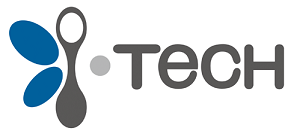Does your enterprise-class cloud storage give you the features you imagined? Several years into the cloud storage movement, your cloud services may not yet live up to the promise of this revolutionary concept.
That said, the definition of cloud storage has gotten pretty fuzzy. If data is stored offsite, it is now common to refer to it as a “cloud”, whereas in previous years it was simply an internet service, application service provider or software as a service. .
Let’s elaborate on what we mean by cloud storage and what it can mean for the future of international collaboration in your business.
What defines a “real” cloud storage service?
In our view, Apple’s iCloud, Salesforce, and the dozens of “cloud backup” services aren’t really clouds. To qualify as a cloud storage service, three criteria must be met:
Flexibility: Your service should be open to everyone, for all purposes. If the “cloud” is only there to support other offerings from the “cloud” provider, it is not a cloud.
Dynamic cost structure: Your service must be reservationless and pay-as-you-go. Purchasing a managed Logical Unit Number (LUN) from your hosting company does not count.
Redundancy: Your service must support at least two data replicas in two different data centers. If you can’t survive a disaster in a data center without losing customer data, you don’t count.
There are several players in this space under this definition, including, but not limited to:
In addition, the cloud storage services market has several other competitors, especially in the area of managed service providers (MSPs).
These companies provide what is analogous to a never full hard drive in heaven, which will not lose your data.
The first successes of the cloud
End users are beginning to realize the benefits of cloud computing over managing their on-premises capacity.
Additionally, a number of companies have sprung up to make connecting to the cloud easier and more secure, while providing a familiar and powerful user experience.
In effect, these companies are turning the hard drive in the sky created by cloud service providers into a storage array – with the usual data provisioning and data protection features.
By including tools such as recoverable data snapshots and making their service accessible through standard storage interfaces such as iSCSI or CIFS, the cloud becomes a more flexible resource.
This is a good thing and a big step forward, beyond the days of having to program the native HTTP/REST APIs of cloud providers.
What cloud storage should become
The modern cloud has come a long way with its early advancements. However, these first successes are not an end in themselves.
We’ve had the privilege of speaking to hundreds of IT end users in large enterprises about the cloud. An interesting question often comes up that we believe concerns people’s latent and still unfulfilled desires for cloud computing. The question is roughly as follows:
It is quite logical. If the data is in the cloud, it should be accessible from anywhere with an internet connection.
However, relying on cloud data as the master copy for global collaboration amplifies a few caveats.
Condition 1: access to cloud data
First, if the data was fed into the cloud by an on-premises gateway, as we described earlier, it must also be read back by that gateway.
Gateways encrypt data stored in the cloud and usually deduplicate it as well. Therefore, the data stored in the cloud no longer resembles the original data.
All data accessed must be reconstituted by a gateway to be used. This is perfectly normal and meets customer expectations.
Condition 2: Ownership of cloud data
The second caveat is the most important: data ownership should only belong to one gateway at a time. In other words, if a second gateway can access all active data in the cloud in read-only mode , it cannot write to it .
This dashes the dreams of IT managers who imagine users in their geographically dispersed offices around the world collaborating on data sets that are centrally stored, managed and protected in the cloud.
They hate it even more when end users go “off the grid” using shadow computing solutions, or carry around CDs and discs to take advantage of the sneakernet.
But since standard gateway-to-the-cloud solutions don’t know how to handle file or record locking to prevent data corruption by multiple writers, they simply don’t allow multipoint read/write access to cloud data. cloud.
Raising the Bar with Hybrid Cloud
There is a technology to create global file services at the edge of the network that rely on a common, centralized core – the cloud.
Imagine how much easier it would be for IT to manage all of its capacity in one place. Imagine what end users could do if everyone at every site saw the same view of the file system and could read and write to any data (given appropriate access controls, of course), regardless where it was created.
It’s not a drive in the sky…and it’s not a storage array in the sky either. It’s a whole new capability that didn’t exist in the past and can only be realized by harnessing the power of cloud storage in new and unique ways, letting go of old paradigms.
Fundamentals of an Intelligent File System for the Hybrid Cloud
An intelligent hybrid cloud file system is one that leverages globally accessible storage in the cloud, while using local filers to manage file metadata mining . Thus, enterprises gain the economic benefits of the infinite scalability of the cloud while maximizing local performance.
As a software-defined solution , the performance, authentication, and visibility of this data can be brought to the edge. As a result, this business solution can support users in a powerful way.
At its core, this type of hybrid cloud serves as an immutable repository for a business. In other words, the central cloud storage represents all copies of permanently immutable master data, as well as a breadcrumb trail of unique blocks containing all changes. All of this is carefully self-managed for IT convenience.
However, the intelligence comes from all the built-in features that make hybrid cloud file systems ideal:
By layering the mechanisms to enable the distribution of file locking from site to site and by designing authority and consistency to be dictated from the edge inwards, your storage reflects the path by which changes are made. Therefore, your team’s collaborative efforts can benefit from the value of this globally available core.
While immutable data may seem like tons of extra data to store, globally synchronized lightweight metadata acts as a paper trail for all bound blocks. Deduplication uses this record to eliminate duplicate data and maintain a single , authoritative thread. Compression reduces your blocks to a feathery mass of data ready for compact and affordable storage.
As an immutable repository, a hybrid cloud can also turn your data redundancy into a single, logical workflow, instead of one requiring multiple copies of the same data. Using blocks as recoverable data snapshots , your workflow includes:

